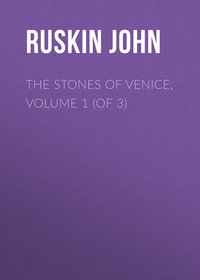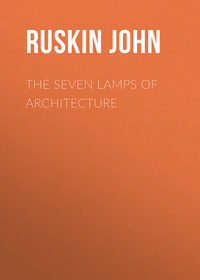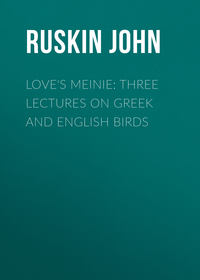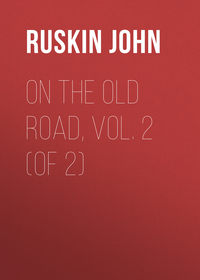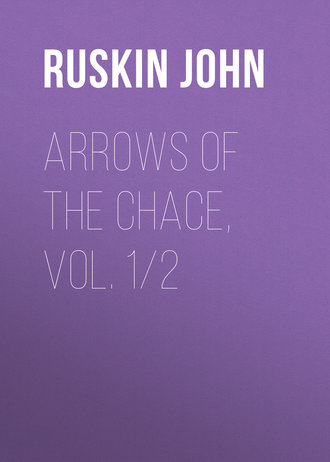 полная версия
полная версияArrows of the Chace, vol. 1/2
Your correspondent herself, in saying that mere knowledge of pictures cannot qualify a man for the office of a critic, has touched the first source of the schisms of the present, and of all time, in questions of pictorial merit. We are overwhelmed with a tribe of critics who are fully imbued with every kind of knowledge which is useful to the picture-dealer, but with none that is important to the artist. They know where a picture has been retouched, but not where it ought to have been; they know if it has been injured, but not if the injury is to be regretted. They are unquestionable authorities in all matters relating to the panel or the canvas, to the varnish or the vehicle, while they remain in entire ignorance of that which the vehicle conveys. They are well acquainted with the technical qualities of every master’s touch; and when their discrimination fails, plume themselves on indisputable tradition, and point triumphantly to the documents of pictorial genealogy. But they never go quite far enough back; they stop one step short of the real original; they reach the human one, but never the Divine. Whatever, under the present system of study, the connoisseur of the gallery may learn or know, there is one thing he does not know—and that is nature. It is a pitiable thing to hear a man like Dr. Waagen,14 about to set the seal of his approbation, or the brand of his reprobation, on all the pictures in our island, expressing his insipid astonishment on his first acquaintance with the sea. “For the first time I understood the truth of their pictures (Backhuysen’s and Van de Velde’s), and the refined art with which, by intervening dashes of sunshine, near or at a distance, and ships to animate the scene, they produce such a charming variety on the surface of the sea.” For the first time!—and yet this gallery-bred judge, this discriminator of colored shreds and canvas patches, who has no idea how ships animate the sea, until—charged with the fates of the Royal Academy—he ventures his invaluable person from Rotterdam to Greenwich, will walk up to the work of a man whose brow is hard with the spray of a hundred storms, and characterize it as “wanting in truth of clouds and waves”! Alas for Art, while such judges sit enthroned on their apathy to the beautiful, and their ignorance of the true, and with a canopy of canvas between them and the sky, and a wall of tradition, which may not be broken through, concealing from them the horizon, hurl their darkened verdicts against the works of men, whose night and noon have been wet with the dew of heaven—dwelling on the deep sea, or wandering among the solitary places of the earth, until they have “made the mountains, waves, and skies a part of them and of their souls.”
When information so narrow is yet the whole stock in trade of the highest authorities of the day, what are we to expect from the lowest? Dr. Waagen is a most favorable specimen of the tribe of critics; a man, we may suppose, impartial, above all national or party prejudice, and intimately acquainted with that half of his subject (the technical half) which is all we can reasonably expect to be known by one who has been trained in the painting-room instead of in the fields. No authority is more incontrovertible in all questions of the genuineness of old pictures. He has at least the merit—not common among those who talk most of the old masters—of knowing what he does admire, and will not fall into the same raptures before an execrable copy as before the original. If, then, we find a man of this real judgment in those matters to which his attention has been directed, entirely incapable, owing to his ignorance of nature, of estimating a modern picture, what can we hope from those lower critics who are unacquainted even with those technical characters which they have opportunities of learning? What, for instance, are we to anticipate from the sapient lucubrations of the critic—for some years back the disgrace of the pages of “Blackwood”—who in one breath displays his knowledge of nature, by styling a painting of a furze bush in the bed of a mountain torrent a specimen of the “high pastoral,” and in the next his knowledge of Art, by informing us that Mr. Lee “reminds him of Gainsborough’s best manner, but is inferior to him in composition”!15 We do not mean to say anything against Mr. Lee; but can we forbear to smile at the hopeless innocence of the man’s novitiate, who could be reminded by them of landscapes powerful enough in color to take their place beside those of Rembrandt or Rubens? A little attention will soon convince your correspondent of the utter futility or falsehood of the ordinary critiques of the press; and there could, I believe, even at present, be little doubt in her mind as to the fitting answer to the question, whether we are to take the opinion of the accomplished artist or of the common newsmonger, were it not for a misgiving which, be she conscious of it or not, is probably floating in her mind—whether that can really be great Art which has no influence whatsoever on the multitude, and is appreciable only by the initiated few. And this is the real question of difficulty. It is easy to prove that such and such a critic is wrong; but not so, to prove that what everybody dislikes is right. It is fitting to pay respect to Sir Augustus Callcott, but is it so to take his word against all the world?
This inquiry requires to be followed with peculiar caution; for by setting at defiance the judgment of the public, we in some sort may appear to justify that host of petty scribblers, and contemptible painters, who in all time have used the same plea in defence of their rejected works, and have received in consequence merciless chastisement from contemporary and powerful authors or painters, whose reputation was as universal as it was just. “Mes ouvrages,” said Rubens to his challenger, Abraham Janssens, “ont été exposés en Italie, et en Espagne, sans que j’aie reçu la nouvelle de leur condamnation. Vous n’avez qu’à soumettre les votres à la même épreuve.”16 “Je défie,” says Boileau, “tous les amateurs les plus mécontents du public, de me citer un bon livre que le public ait jamais rebuté, à moins qu’ils ne mettent en ce rang leur écrits, de la bonté desquels eux seuls sont persuadés.”
Now the fact is, that the whole difficulty of the question is caused by the ambiguity of this word—the “public.” Whom does it include? People continually forget that there is a separate public for every picture, and for every book. Appealed to with reference to any particular work, the public is that class of persons who possess the knowledge which it presupposes, and the faculties to which it is addressed. With reference to a new edition of Newton’s Principia, the “public” means little more than the Royal Society. With reference to one of Wordsworth’s poems, it means all who have hearts. With reference to one of Moore’s, all who have passions. With reference to the works of Hogarth, it means those who have worldly knowledge to the works of Giotto, those who have religious faith. Each work must be tested exclusively by the fiat of the particular public to whom it is addressed. We will listen to no comments on Newton from people who have no mathematical knowledge; to none on Wordsworth from those who have no hearts; to none on Giotto from those who have no religion. Therefore, when we have to form a judgment of any new work, the question “What do the public say to it?” is indeed of vital importance; but we must always inquire, first, who are its public? We must not submit a treatise on moral philosophy to a conclave of horse-jockeys, nor a work of deep artistical research to the writers for the Art Union.
The public, then, we repeat, when referred to with respect to a particular work, consist only of those who have knowledge of its subject, and are possessed of the faculties to which it is addressed.
If it fail of touching these, the work is a bad one; but it in no degree militates against it that it is rejected by those to whom it does not appeal. To whom, then, let us ask, and to what public do the works of Turner appeal? To those only, we reply, who have profound and disciplined acquaintance with nature, ardent poetical feeling, and keen eye for color (a faculty far more rare than an ear for music). They are deeply-toned poems, intended for all who love poetry, but not for those who delight in mimickries of wine-glasses and nutshells. They are deep treatises on natural phenomena, intended for all who are acquainted with such phenomena, but not for those who, like the painter Barry, are amazed at finding the realities of the Alps grander than the imaginations of Salvator, and assert that they saw the moon from the Mont Cenis four times as big as usual, “from being so much nearer to it”!17 And they are studied melodies of exquisite color, intended for those who have perception of color; not for those who fancy that all trees are Prussian green. Then comes the question, Were the works of Turner ever rejected by any person possessing even partially these qualifications? We answer boldly, never. On the contrary, they are universally hailed by this public with an enthusiasm not undeserving in appearance—at least to those who are debarred from sharing in it, of its usual soubriquet—the Turner mania.
Is, then, the number of those who are acquainted with the truth of nature so limited? So it has been asserted by one who knew much both of Art and Nature, and both were glorious in his country.18
“ΙΙΙ. Οὐ μέντοι εἰώθασιν ἄνθρωποι ὀνομάζειν οὔτωςΣΩ. Πότερον, ὦ Ἱππία, οἱ εἰδότες ἢ οἱ μὴ εἰδότες;ΙΠ. Οἱ πολλοί.ΣΩ. Εἰσὶ δ᾿ οὗτοι οἱ εἰδότες τἀληθές, οἱ πολλοί;ΙΠ. Οὐ δῆτα.Hippias Major.Now, we are not inclined to go quite so far as this. There are many subjects with respect to which the multitude are cognizant of truth, or at least of some truth; and those subjects may be generally characterized as everything which materially concerns themselves or their interests. The public are acquainted with the nature of their own passions, and the point of their own calamities—can laugh at the weakness they feel, and weep at the miseries they have experienced; but all the sagacity they possess, be it how great soever, will not enable them to judge of likeness to that which they have never seen, nor to acknowledge principles on which they have never reflected. Of a comedy or a drama, an epigram or a ballad, they are judges from whom there is no appeal; but not of the representation of facts which they have never examined, of beauties which they have never loved. It is not sufficient that the facts or the features of nature be around us, while they are not within us. We may walk day by day through grove and meadow, and scarcely know more concerning them than is known by bird and beast, that the one has shade for the head, and the other softness for the foot. It is not true that “the eye, it cannot choose but see,” unless we obey the following condition, and go forth “in a wise passiveness,”19 free from that plague of our own hearts which brings the shadow of ourselves, and the tumult of our petty interests and impatient passions, across the light and calm of Nature. We do not sit at the feet of our mistress to listen to her teaching; but we seek her only to drag from her that which may suit our purpose, to see in her the confirmation of a theory, or find in her fuel for our pride. Nay, do we often go to her even thus? Have we not rather cause to take to ourselves the full weight of Wordsworth’s noble appeal—
“Vain pleasures of luxurious life!Forever with yourselves at strife,Through town and country, both derangedBy affections interchanged,And all the perishable gaudsThat heaven-deserted man applauds.When will your hapless patrons learnTo watch and ponder, to discernThe freshness, the eternal youthOf admiration, sprung from truth,From beauty infinitely growingUpon a mind with love overflowing:To sound the depths of every artThat seeks its wisdom through the heart?”20When will they learn it? Hardly, we fear, in this age of steam and iron, luxury and selfishness. We grow more and more artificial day by day, and see less and less worthiness in those pleasures which bring with them no morbid excitement, in that knowledge which affords us no opportunity of display. Your correspondent may rest assured that those who do not care for nature, who do not love her, cannot see her. A few of her phenomena lie on the surface; the nobler number lie deep, and are the reward of watching and of thought. The artist may choose which he will render: no human art can render both. If he paint the surface, he will catch the crowd; if he paint the depth, he will be admired only—but with how deep and fervent admiration, none but they who feel it can tell—by the thoughtful and observant few.
There are some admirable observations on this subject in your December number (“An Evening’s Gossip with a Painter”21); but there is one circumstance with respect to the works of Turner which yet further limits the number of their admirers. They are not prosaic statements of the phenomena of nature—they are statements of them under the influence of ardent feeling; they are, in a word, the most fervent and real poetry which the English nation is at present producing. Now not only is this proverbially an age in which poetry is little cared for; but even with those who have most love of it, and most need of it, it requires, especially if high and philosophical, an attuned, quiet, and exalted frame of mind for its enjoyment; and if dragged into the midst of the noisy interests of every-day life, may easily be made ridiculous or offensive. Wordsworth recited, by Mr. Wakley, in the House of Commons, in the middle of a financial debate, would sound, in all probability, very like Mr. Wakley’s22 own verses. Wordsworth, read in the stillness of a mountain hollow, has the force of the mountain waters. What would be the effect of a passage of Milton recited in the middle of a pantomime, or of a dreamy stanza of Shelley upon the Stock Exchange? Are we to judge of the nightingale by hearing it sing in broad daylight in Cheapside? For just such a judgment do we form of Turner by standing before his pictures in the Royal Academy. It is a strange thing that the public never seem to suspect that there may be a poetry in painting, to meet which, some preparation of sympathy, some harmony of circumstance, is required; and that it is just as impossible to see half a dozen great pictures as to read half a dozen great poems at the same time, if their tendencies or their tones of feeling be contrary or discordant. Let us imagine what would be the effect on the mind of any man of feeling, to whom an eager friend, desirous of impressing upon him the merit of different poets, should read successively, and without a pause, the following passages, in which lie something of the prevailing character of the works of six of our greatest modern artists:
Landseer.“His hair, his size, his mouth, his lugs,Show’d he was nane o’ Scotland’s dougs,But whalpit some place far abroadWhar sailors gang to fish for cod.”23Martin.“Far in the horizon to the north appear’d,From skirt to skirt, a fiery region, stretchedIn battailous aspéct, and nearer viewBristled with upright beams innumerableOf rigid spears, and helmets throng’d, and shieldsVarious, with boastful argument portray’d.”Wilkie.“The risin’ moon began to glowrThe distant Cumnock hills out owre;To count her horns, wi’ a’ my pow’r,I set mysel’;But whether she had three or fowr,I couldna tell.”Eastlake.“And thou, who tell’st me to forget,Thy looks are wan, thine eyes are wet.”Stanfield.“Ye mariners of England,Who guard our native seas,Whose flag has braved a thousand yearsThe battle and the breeze.”Turner.“The point of one white star is quivering still,Deep in the orange light of widening dawn,Beyond the purple mountains. Through a chasmOf wind-divided mist the darker lakeReflects it, now it fades: it gleams again,As the waves fall, and as the burning threadsOf woven cloud unravel in pale air,’Tis lost! and through yon peaks of cloudlike snowThe roseate sunlight quivers.”Precisely to such advantage as the above passages, so placed,24 appear, are the works of any painter of mind seen in the Academy. None suffer more than Turner’s, which are not only interfered with by the prosaic pictures around them, but neutralize each other. Two works of his, side by side, destroy each other to a dead certainty, for each is so vast, so complete, so demandant of every power, so sufficient for every desire of the mind, that it is utterly impossible for two to be comprehended together. Each must have the undivided intellect, and each is destroyed by the attraction of the other; and it is the chief power and might of these pictures, that they are works for the closet and the heart—works to be dwelt upon separately and devotedly, and then chiefly when the mind is in its highest tone, and desirous of a beauty which may be food for its immortality. It is the very stamp and essence of the purest poetry, that it can only be so met and understood; and that the clash of common interests, and the roar of the selfish world, must be hushed about the heart, before it can hear the still, small voice, wherein rests the power communicated from the Holiest.25
Can, then, will be, if I mistake not, the final inquiry of your correspondent,—can, then, we ordinary mortals,—can I, who am not Sir Augustus Callcott, nor Sir Francis Chantrey, ever derive any pleasure from works of this lofty character? Heaven forbid, we reply, that it should be otherwise. Nothing more is necessary for the appreciation of them, than that which is necessary for the appreciation of any great writer—the quiet study of him with an humble heart. There are, indeed, technical qualities, difficulties overcome and principles developed, which are reserved for the enjoyment of the artist; but these do not add to the influence of the picture. On the contrary, we must break through its charm, before we can comprehend its means, and “murder to dissect.” The picture is intended, not for artists alone, but for all who love what it portrays; and so little doubt have we of the capacity of all to understand the works in question, that we have the most confident expectation, within the next fifty years, of seeing the name of Turner placed on the same impregnable height with that of Shakespeare.26 Both have committed errors of taste and judgment. In both it is, or will be, heresy even to feel those errors, so entirely are they overbalanced by the gigantic powers of whose impetuosity they are the result. So soon as the public are convinced, by the maintained testimony of high authority, that Turner is worth understanding, they will try to understand him; and if they try, they can. Nor are they, now, as is commonly thought, despised or defied by him. He has too much respect for them to endeavor to please them by falsehood. He will not win for himself a hearing by the betrayal of his message.
Finally, then, we would recommend your correspondent, first, to divest herself of every atom of lingering respect or regard for the common criticism of the press, and to hold fast by the authority of Callcott, Chantrey, Landseer, and Stanfield; and this, not because we would have her slavishly subject to any authority but that of her own eyes and reason, but because we would not have her blown about with every wind of doctrine, before she has convinced her reason or learned to use her eyes. And if she can draw at all, let her make careful studies of any natural objects that may happen to come in her way,—sticks, leaves, or stones,—and of distant atmospheric effects on groups of objects; not for the sake of the drawing itself, but for the sake of the powers of attention and accurate observation which thus only can be cultivated. And let her make the study, not thinking of this artist or of that; not conjecturing what Harding would have done, or Stanfield, or Callcott, with her subject; not trying to draw in a bold style, or a free style, or any other style; but drawing all she sees, as far as may be in her power, earnestly, faithfully, unselectingly; and, which is perhaps the more difficult task of the two, not drawing what she does not see. Oh, if people did but know how many lines nature suggests without showing, what different art should we have! And let her never be discouraged by ill success. She will seldom have gained more knowledge than when she most feels her failure. Let her use every opportunity of examining the works of Turner; let her try to copy them, then try to copy some one else’s, and observe which presents most of that kind of difficulty which she found in copying nature. Let her, if possible, extend her acquaintance with wild natural scenery of every kind and character, endeavoring in each species of scenery to distinguish those features which are expressive and harmonious from those which are unaffecting or incongruous; and after a year or two of such discipline as this, let her judge for herself. No authority need then, or can then, be very influential with her. Her own pleasure in works of true greatness27 will be too real, too instinctive, to be persuaded or laughed out of her. We bid her, therefore, heartily good-speed, with this final warning: Let her beware, in going to nature, of taking with her the commonplace dogmas or dicta of art. Let her not look for what is like Titian or like Claude, for composed form or arranged chiaroscuro; but believe that everything which God has made is beautiful, and that everything which nature teaches is true. Let her beware, above everything, of that wicked pride which makes man think he can dignify God’s glorious creations, or exalt the majesty of his universe. Let her be humble, we repeat, and earnest Truth was never sealed, if so sought. And once more we bid her good-speed in the words of our poet-moralist:
“Enough of Science and of Art:Seal up these barren leaves;Come forth, and bring with you a heartThat watches, and receives.”28I have the honor to be, Sir,Your obedient humble servant,The Author of “Modern Painters.”[From “Some Account of the Origin and Objects of the New Oxford Examinations for the Title of Associate in Arts and Certificates,” by T. D. Acland, late Fellow of All Souls’ College, Oxford,29 1858, pp. 54-60.]
THE ARTS AS A BRANCH OF EDUCATIONPenrith, Sept. 25, 1857.My dear Sir: I have just received your most interesting letter, and will try to answer as shortly as I can, saying nothing of what I feel, and what you must well know I should feel, respecting the difficulty of the questions and their importance; except only this, that I should not have had the boldness to answer your letter by return of post, unless, in consequence of conversations on this subject with Mr. Acland and Dr. Acland, two months ago, I had been lately thinking of it more than of any other.30
Your questions fall under two heads: (1) The range which an art examination can take; (2) The connection in which it should be placed with other examinations.
I think the art examination should have three objects:
(1) To put the happiness and knowledge which the study of art conveys within the conception of the youth, so that he may in after-life pursue them, if he has the gift.
(2) To enforce, as far as possible, such knowledge of art among those who are likely to become its patrons, or the guardian of its works, as may enable them, usefully to fulfil those duties.
(3) To distinguish pre-eminent gift for the production of works of art, so as to get hold of all the good artistical faculty born in the country, and leave no Giotto lost among hill-shepherds.31
In order to accomplish the first object, I think that, according to Mr. Acland’s proposal, preliminary knowledge of drawing and music should be asked for, in connection with writing and arithmetic; but not, in the preliminary examination, made to count towards distinction in other schools. I think drawing is a necessary means of the expression of certain facts of form and means of acquaintance with them, as arithmetic is the means of acquaintance with facts of number. I think the facts which an elementary knowledge of drawing enables a man to observe and note are often of as much importance to him as those which he can describe in words or calculate in numbers. And I think the cases in which mental deficiency would prevent the acquirement of a serviceable power of drawing would be found as rare as those in which no progress could be made in arithmetic. I would not desire this elementary knowledge to extend far, but the limits which I would propose are not here in question. While I feel the force of all the admirable observations of Mr. Hullah on the use of the study of music, I imagine that the cases of physical incapacity of distinguishing sounds would be too frequent to admit of musical knowledge being made a requirement; I would ask for it, in Mr. Acland’s sense; but the drawing might, I think, be required, as arithmetic would be.


